| Travel Photos Home Page |
Hong Kong, Oct 2018
The New Territories |
||||
|
To return to the Paintings section of this website, please CLICK HERE
|
|||
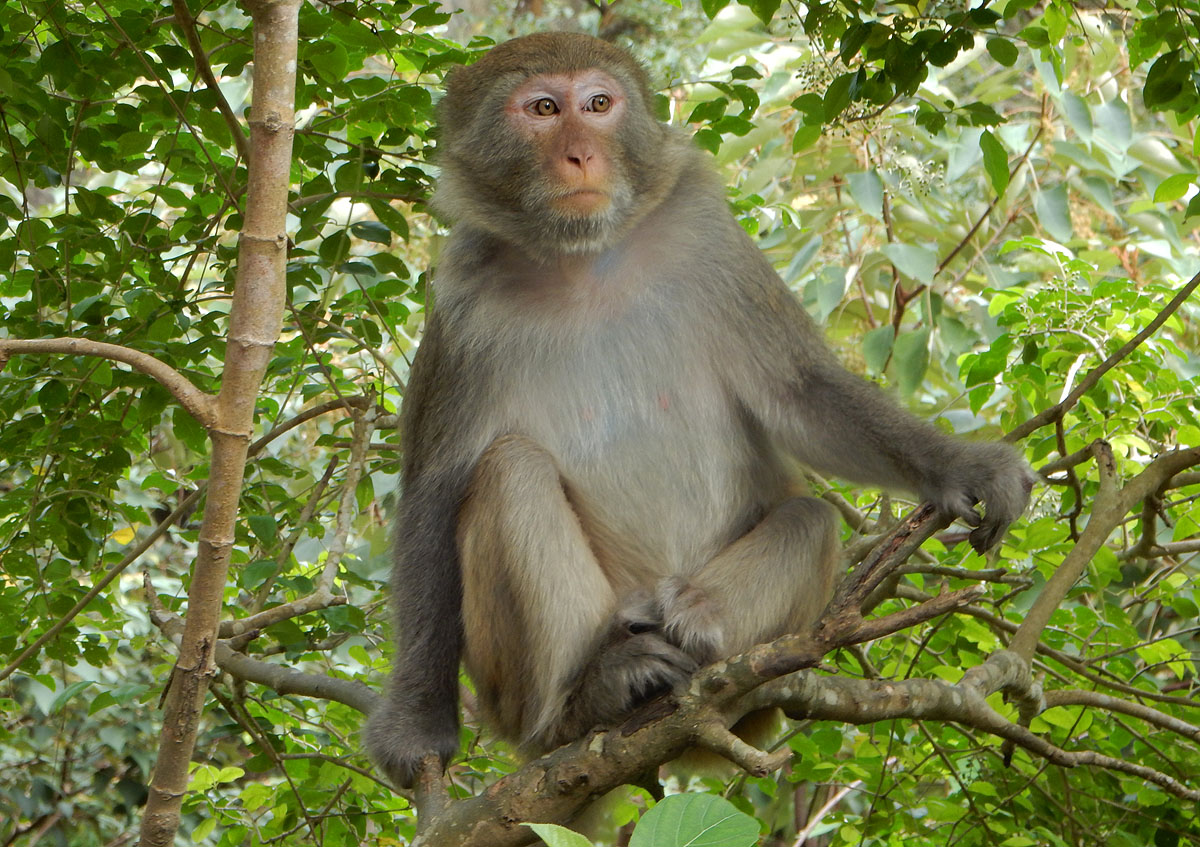 |
|||
| Meet an unfamiliar resident of Hong Kong.
He lives in the New Territories, close to a beautiful reservoir, high up in the Kowloon mountain range. |
|||
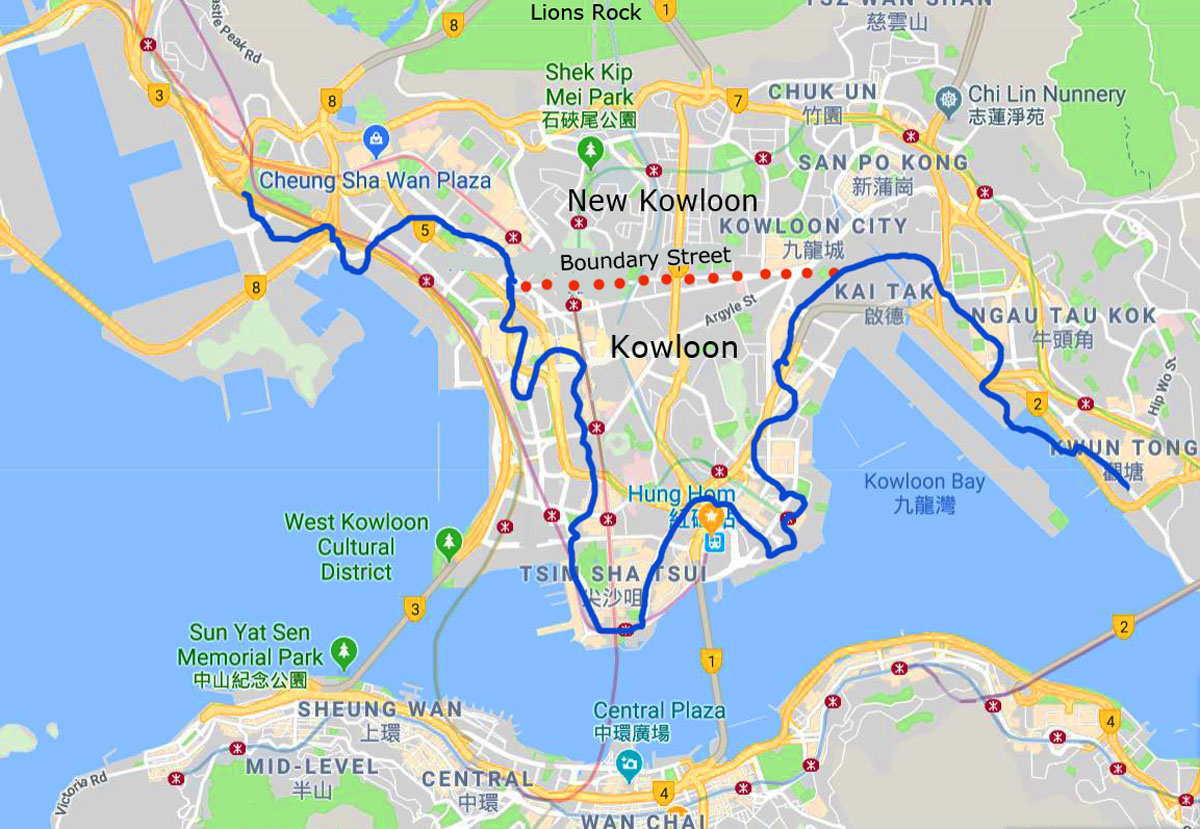 |
|||||||
| Since this web page is about the New Territories of Hong Kong, it may be worth our while to review some of the history of Hong Kong as a British Colony. For instance, just what constituted the "New" Territories in the 19th Century?
After the disastrous 1841 Opium War, Qing Dynasty China was obliged to "cede in perpetuity" the Island of Hong Kong and part of the Kowloon peninsula to the British in 1842. The border between the British Colony and China was set at what is now Boundary Street (See the red dots on the map). In 1898, the Treaty of Nanking "leased" all the land from Boundary Street up to the present Chinese Border to the British for 99 years. These were known then as the New Territories and they included all the islands around Hong Kong Island (including Lan Tau, the largest island). |
If you take a close look at the map above, you can see that I have marked Boundary Street with a series of red dots.
I have also drawn a thick blue line to indicate roughly the original shoreline of the Kowloon Peninsula, before all the land reclamation which has taken place over the decades. Below Boundary Street was Kowloon. Above that street was New Kowloon. Gradually, Old and New Kowloon merged, and the New Territories were then recognised as the land from the Kowloon mountain range to the present Chinese Border. All the islands surrounding Hong Kong were considered separate from the "New Territories", and became known just by their individual names. |
The Chinese have understandably always hated what they call the "Unequal Treaties" which ceded and leased these territories to the British.
From a strictly legal point of view, Margaret Thatcher could have insisted on keeping the Island of Hong Kong and parts of Kowloon (up to Boundary Street) as these were ceded supposedly "in perpetuity" by Qing Dynasty China. However, realistically, those small bits of Colonial Real Estate would have hardly been viable without the "New Territories", whose lease was up in 1997. I remember the time, in the early 1950s, when water had to be strictly rationed when the new Communist Government of China turned off the tap at the border. At that time, much of Hong Kong's water supply came from China. Now, most of it comes from large reservoirs in the New Territories. |
|||||
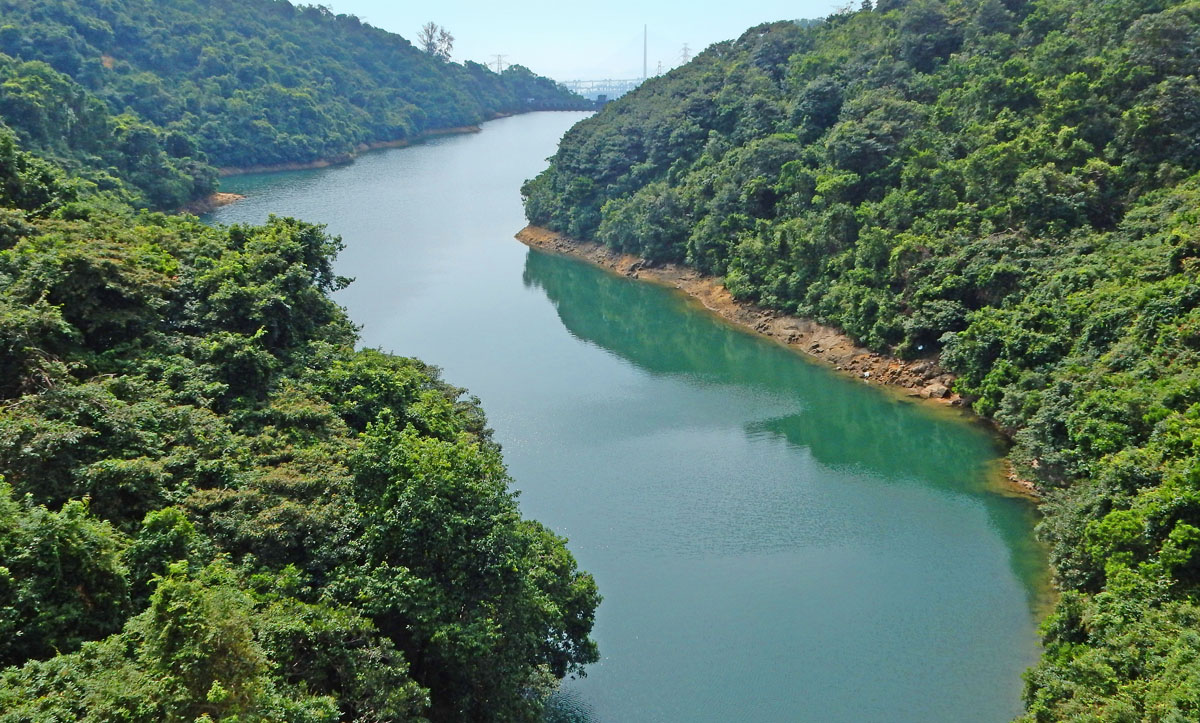 |
|||
| This is the Shek Lei Pui Reservoir in Kam Shan Country Park, Shatin, the New Territories. It was constructed in the 1920s. It is home to a large colony of monkeys, and is one of the favourite places for the keen hikers of Hong Kong.
The monkeys are actually macaques, which are native to Southern China. They are closely related to the Snow Monkeys of Japan. |
|||
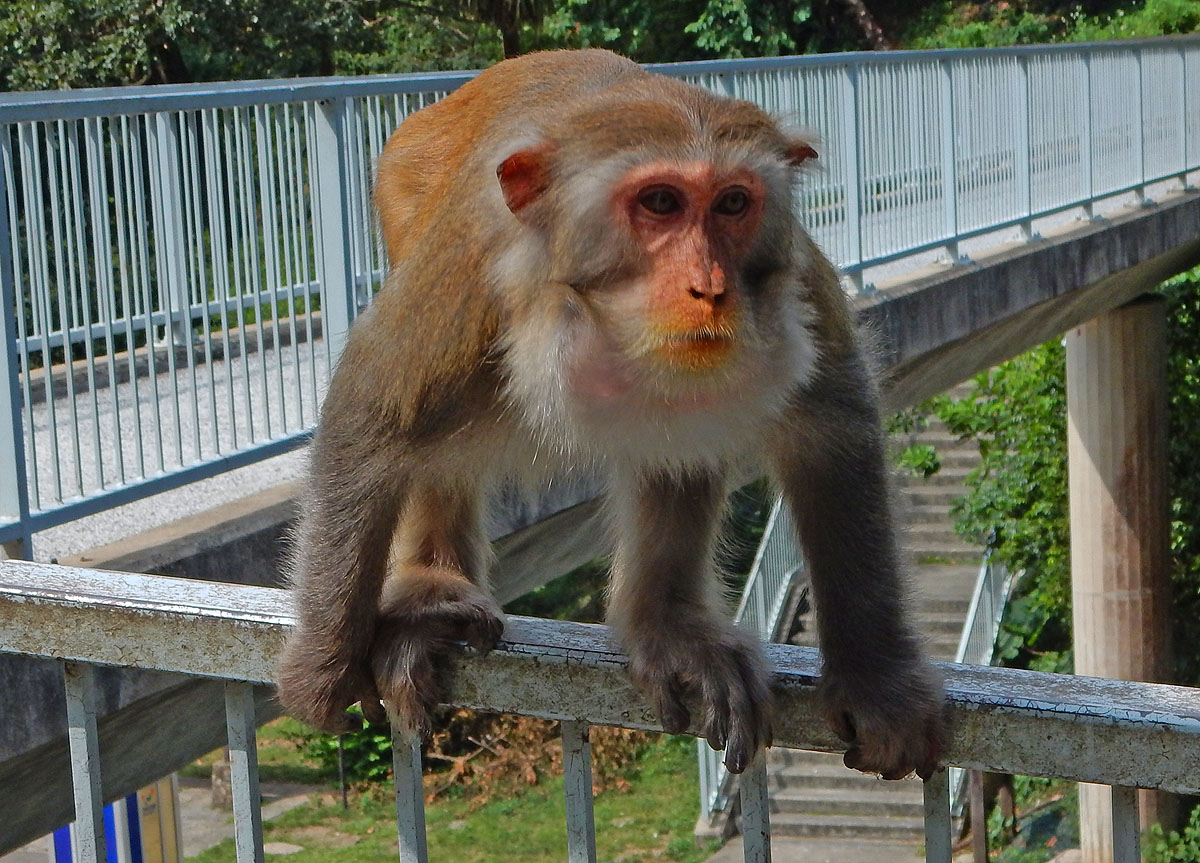 |
|||
| As with the Snow Monkeys of Japan, one should take care not to aggravate them as they can become quite aggressive. Never stare at them because they will take that as a threat.
This particular macaque got really annoyed with me because I had not asked him for permission to take his photograph! |
|||
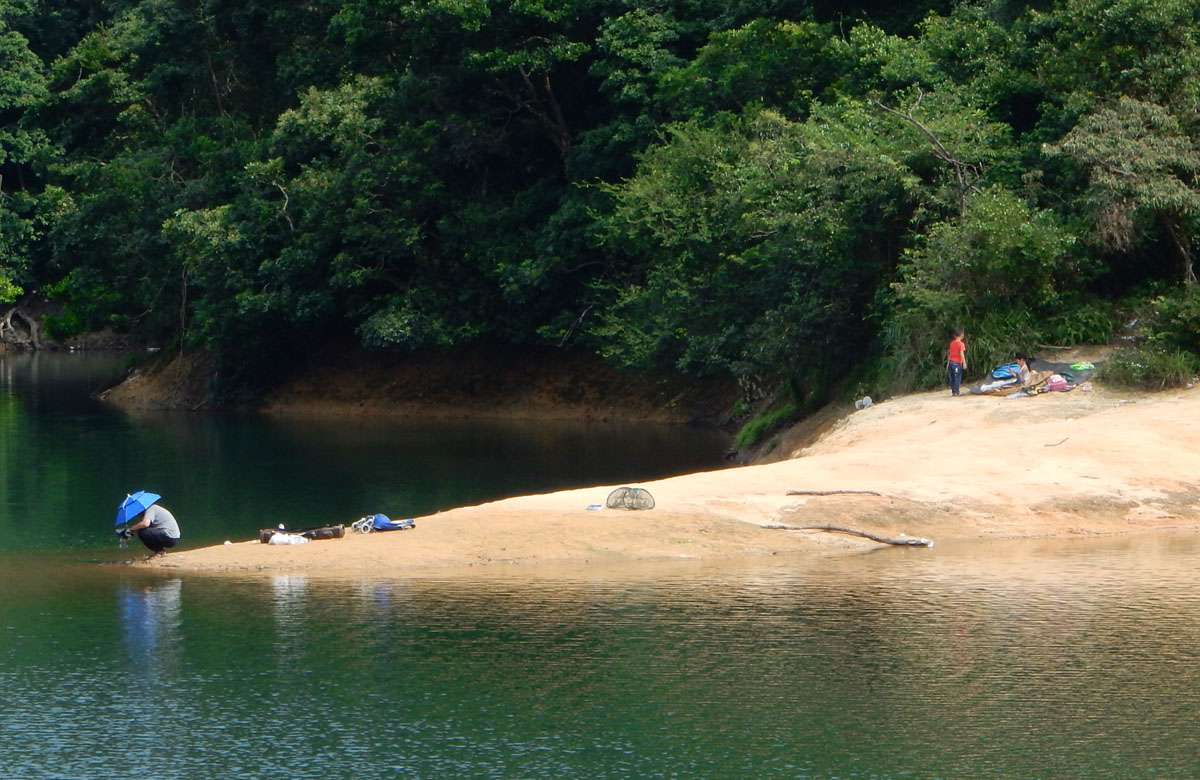 |
|||
| I was amused by the blue umbrella cum sun hat worn by the person on the left of the photo. An interesting variant on the rattan sun helmets worn by the farmers in my time in Hong Kong. | |||
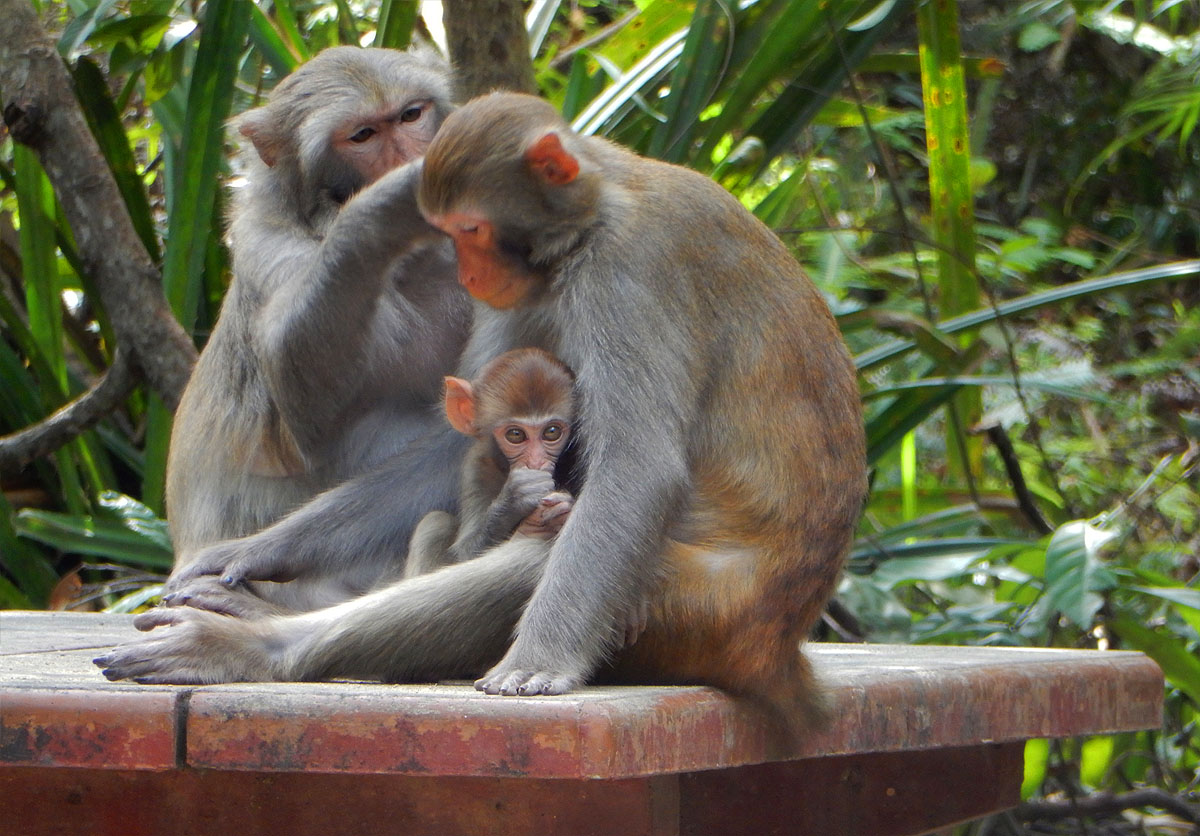 |
|||
| Mum, Dad, and the Kid. We Are Family! | |||
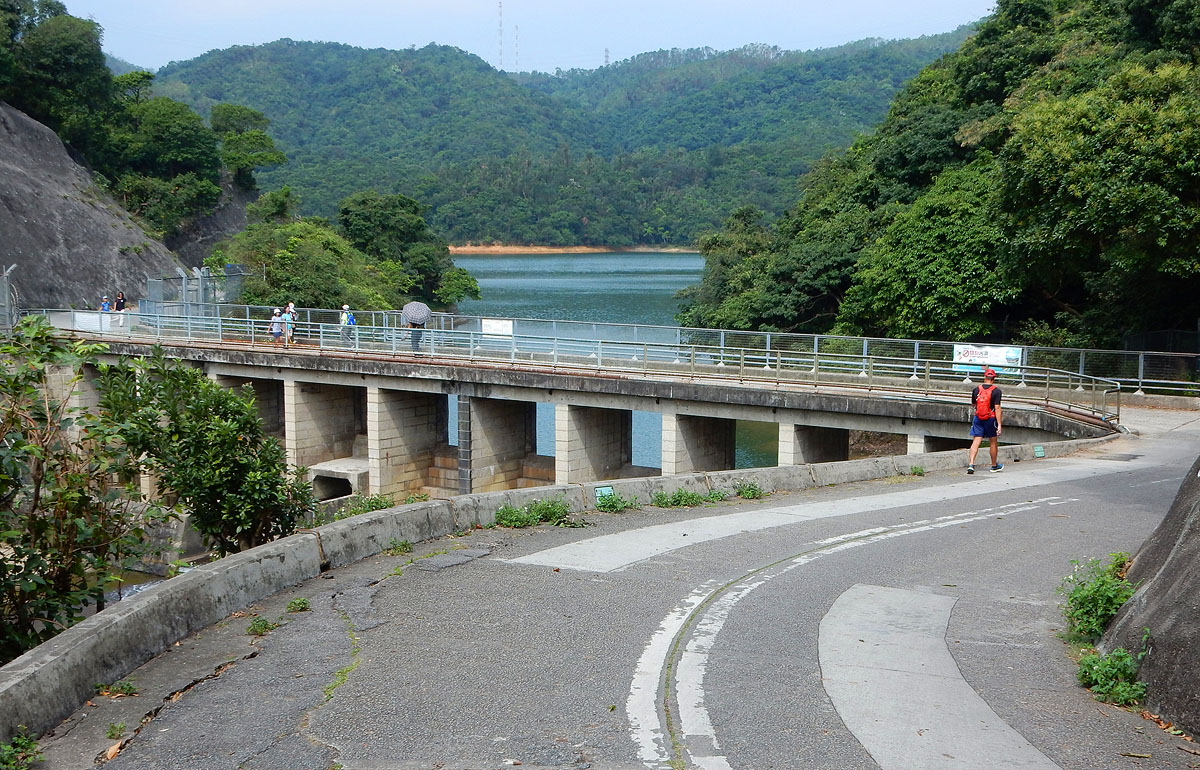 |
|||
| The road leading to the hiking trails around the Shek Lei Pui Reservoir. | |||
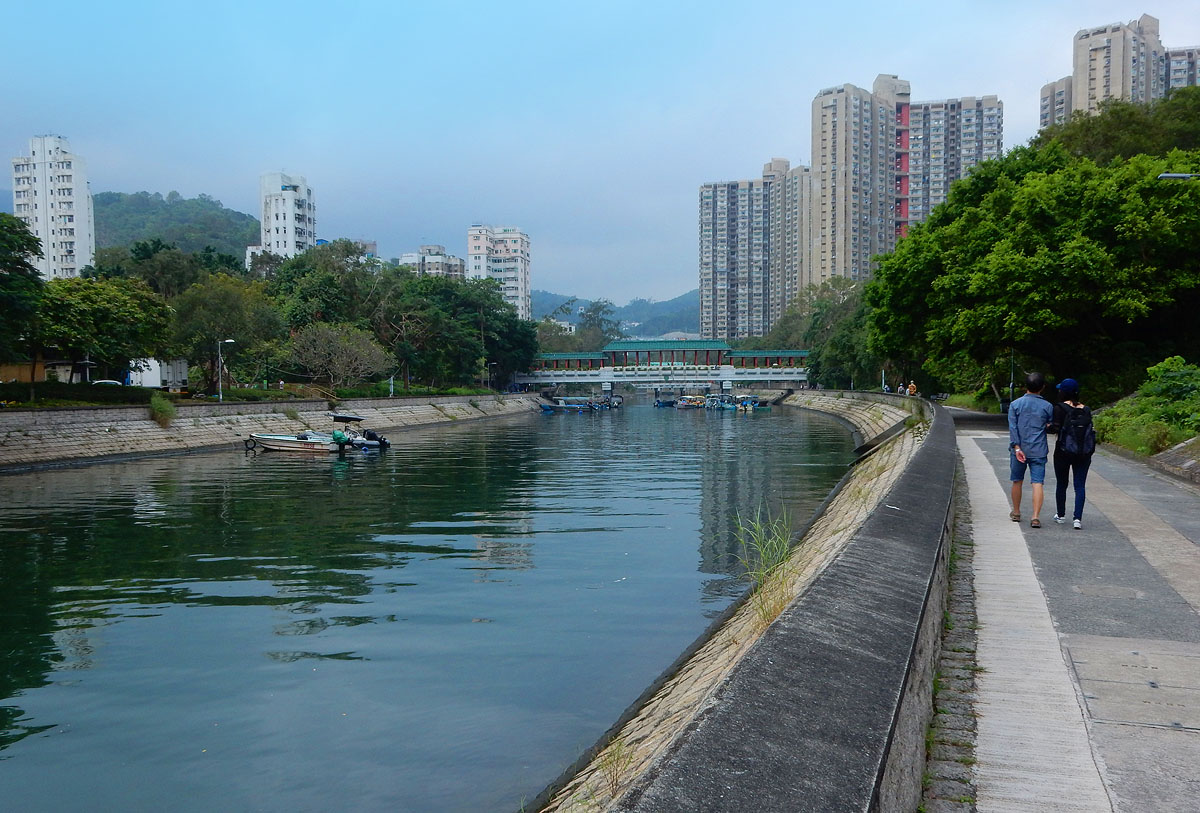 |
|||
| This is modern Taipo in the New Territories, about half way to the border with China, and at the head of the Tolo Channel.
Soon after I was born in Hong Kong in 1937, the Colony was struck by a massive typhoon. A giant tsunami caused by the storm flooded the old villages of Taipo and Shatin, killing thousands in its wake. The new town of Taipo now has high stone embankments designed to protect its inhabitants from another possible tsunami. The last typhoon, which occurred in September, 2018, did cause some damage, especially to trees, but, fortunately, no one in Hong Kong was killed. |
|||
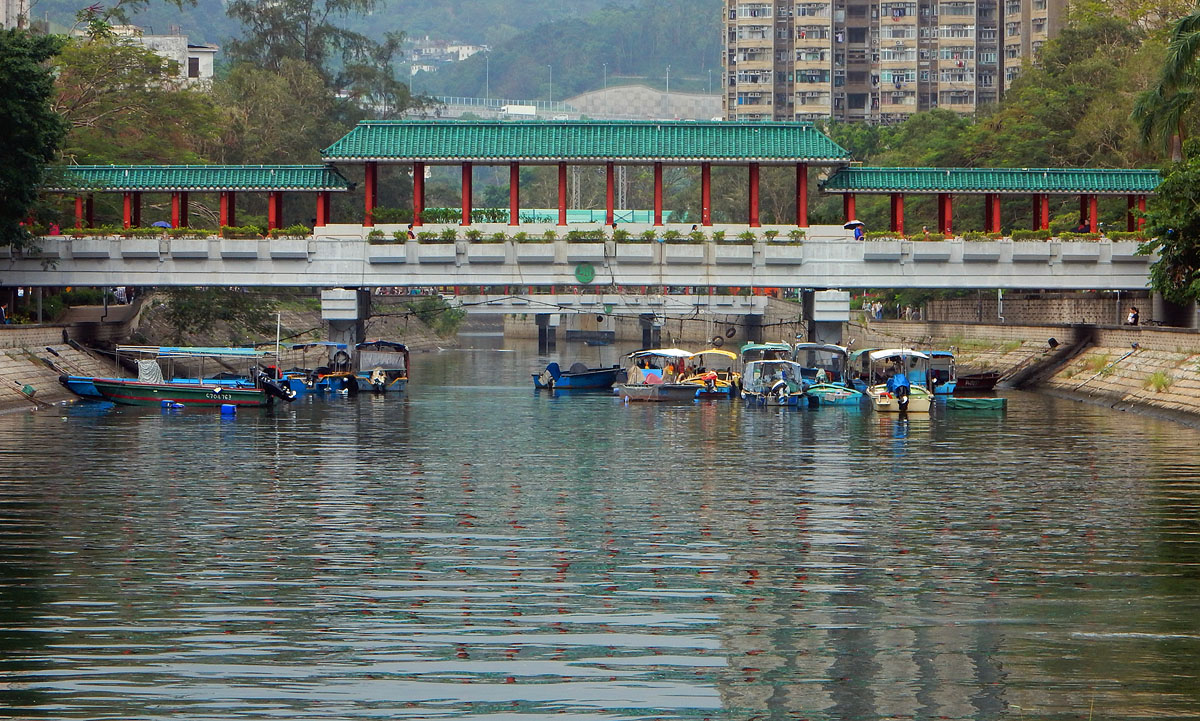 |
|||
| A bridge across the Lam Tsuen River in Taipo. | |||
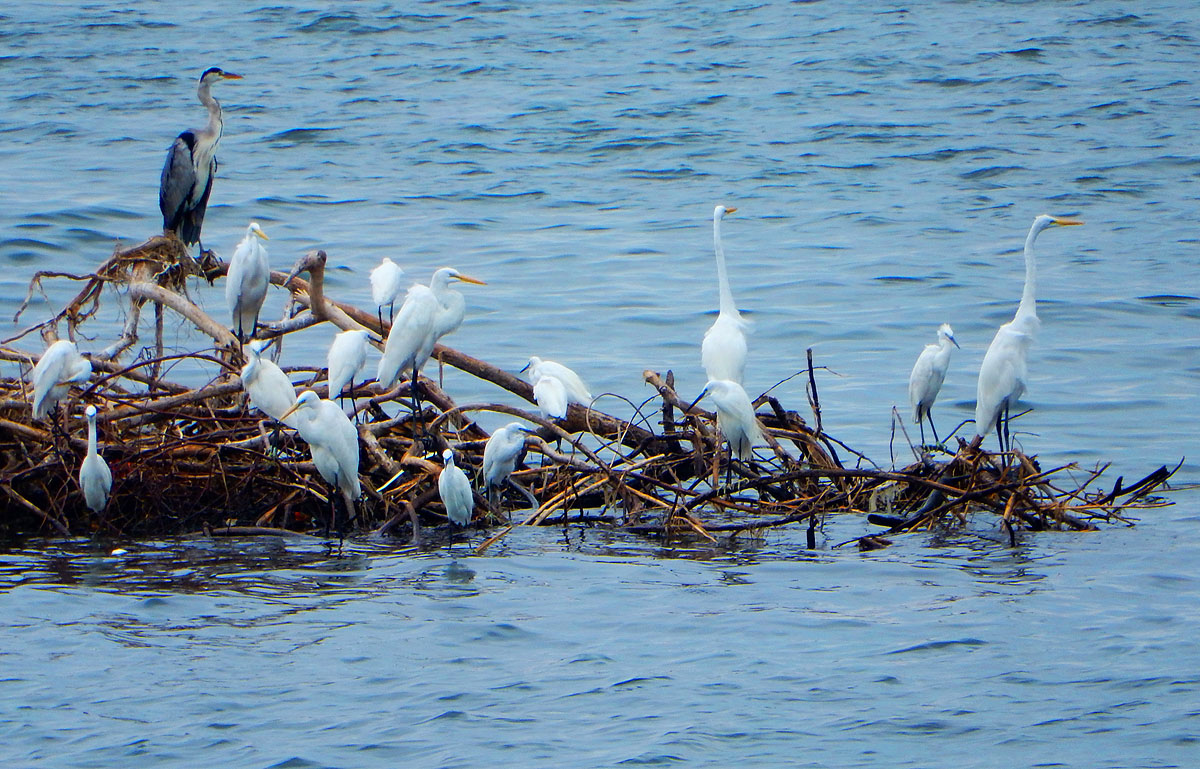 |
|||
| These waterbirds have found some precious floating real estate on the river in Taipo. | |||
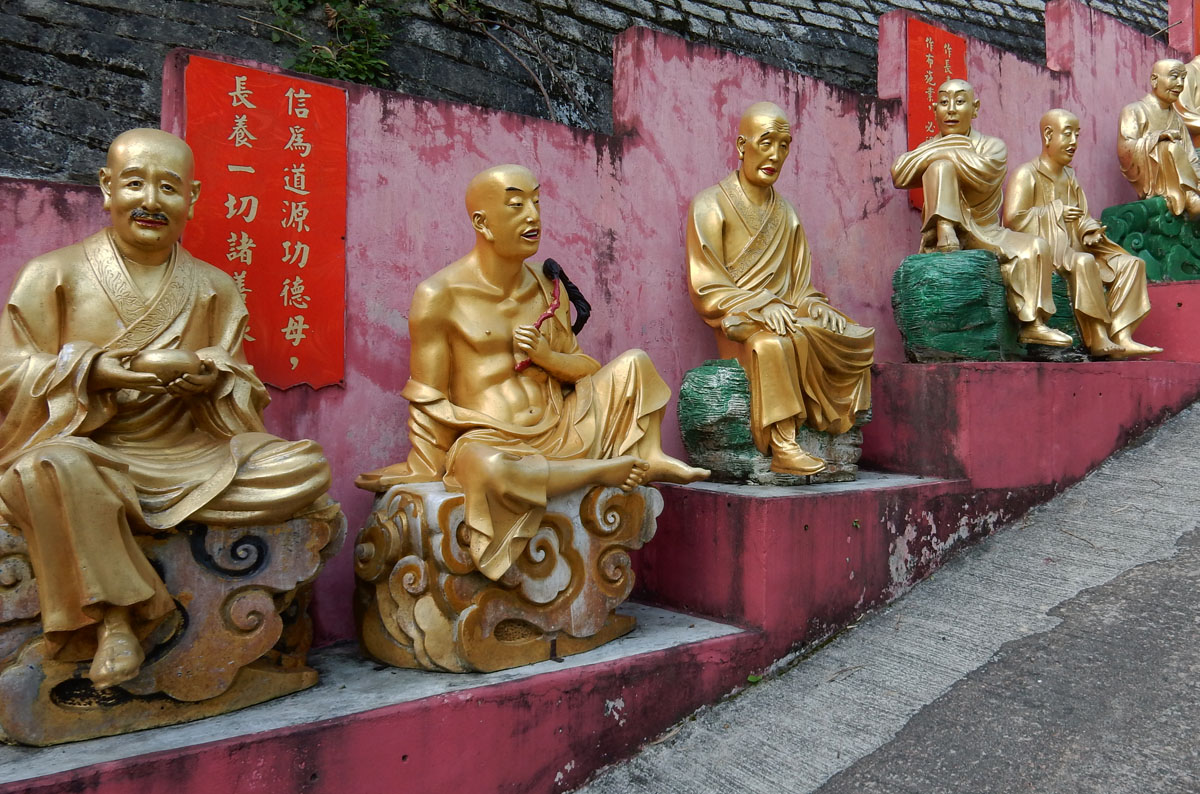 |
|||
| This is the steep road up to the Ten Thousand Buddhas Monastery in Shatin. Great cardio exercise! | |||
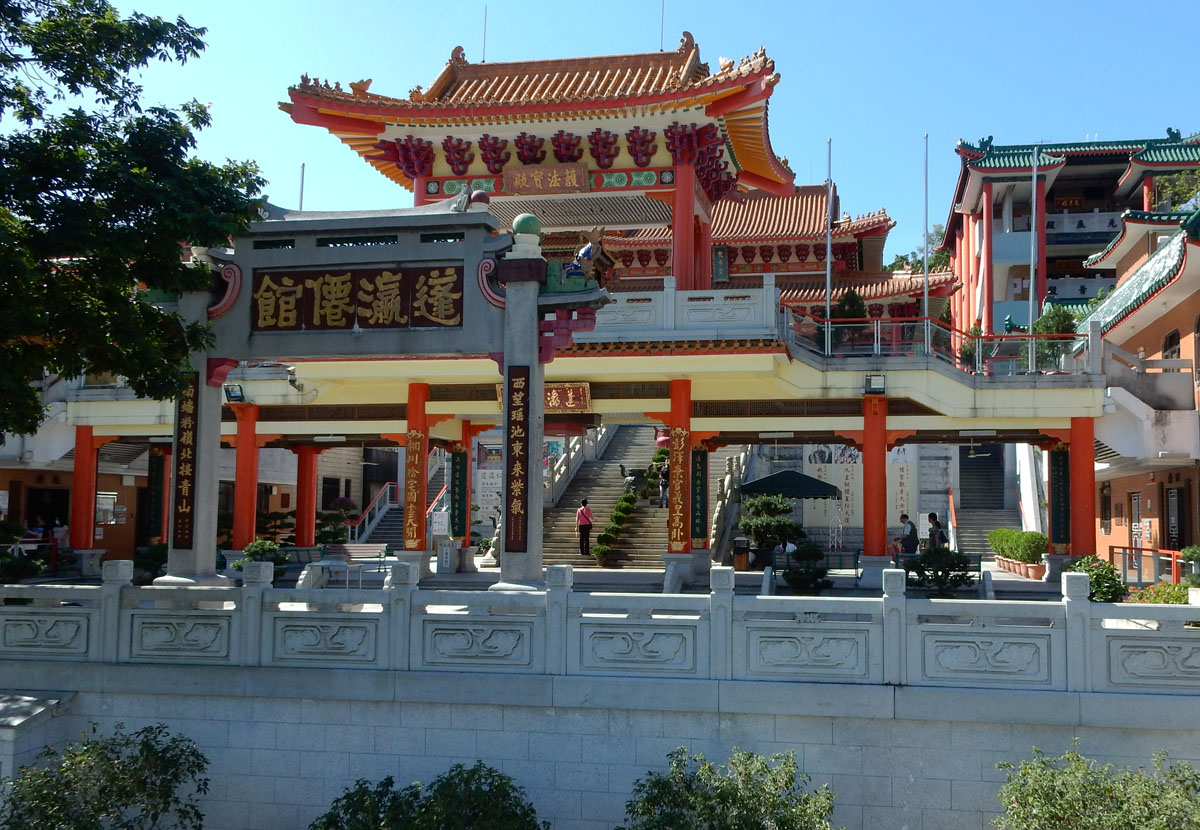 |
|||
| This is Fung Ying Seen Koon in Fanling, in the New Territories. It is dedicated to Daoism. | |||
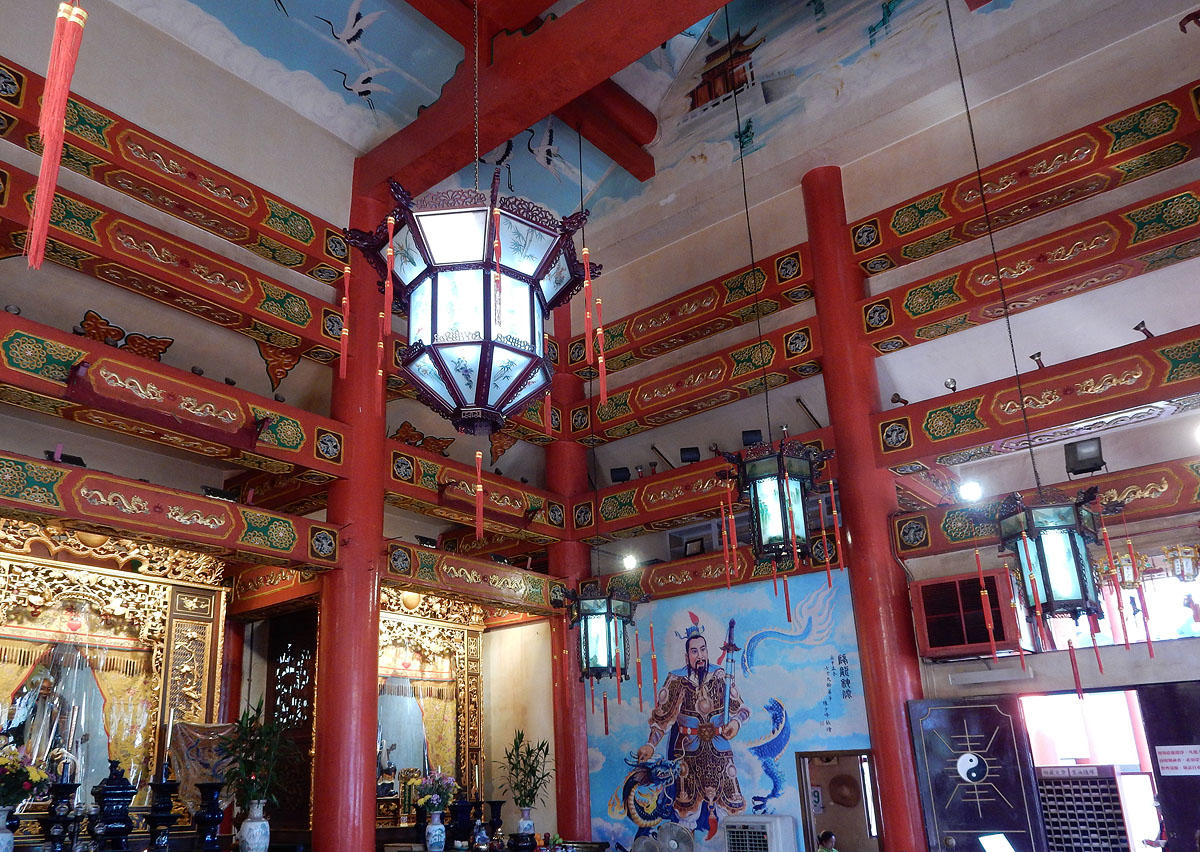 |
|||
| The interior of one of the Temples in Fung Ying Seen Koon. | |||
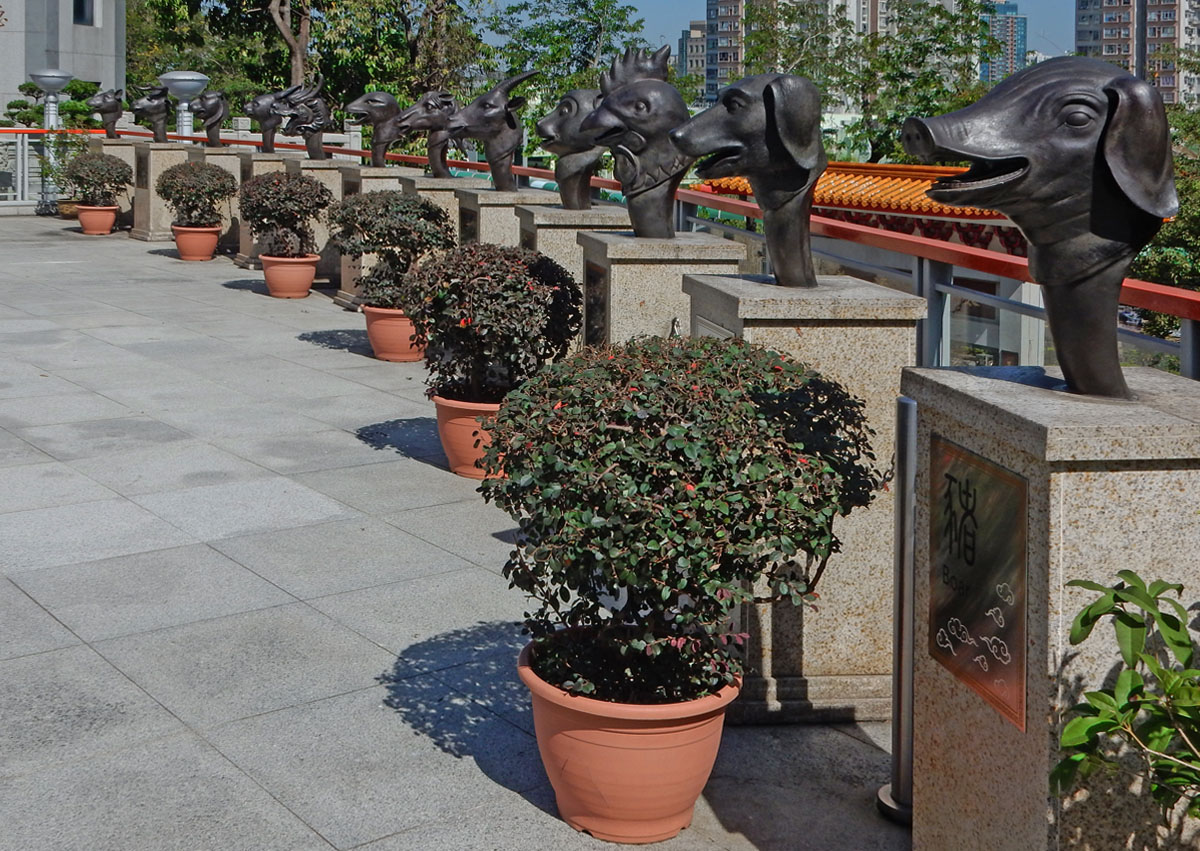 |
|||
| The Twelve Animals of the Chinese Zodiac. | |||
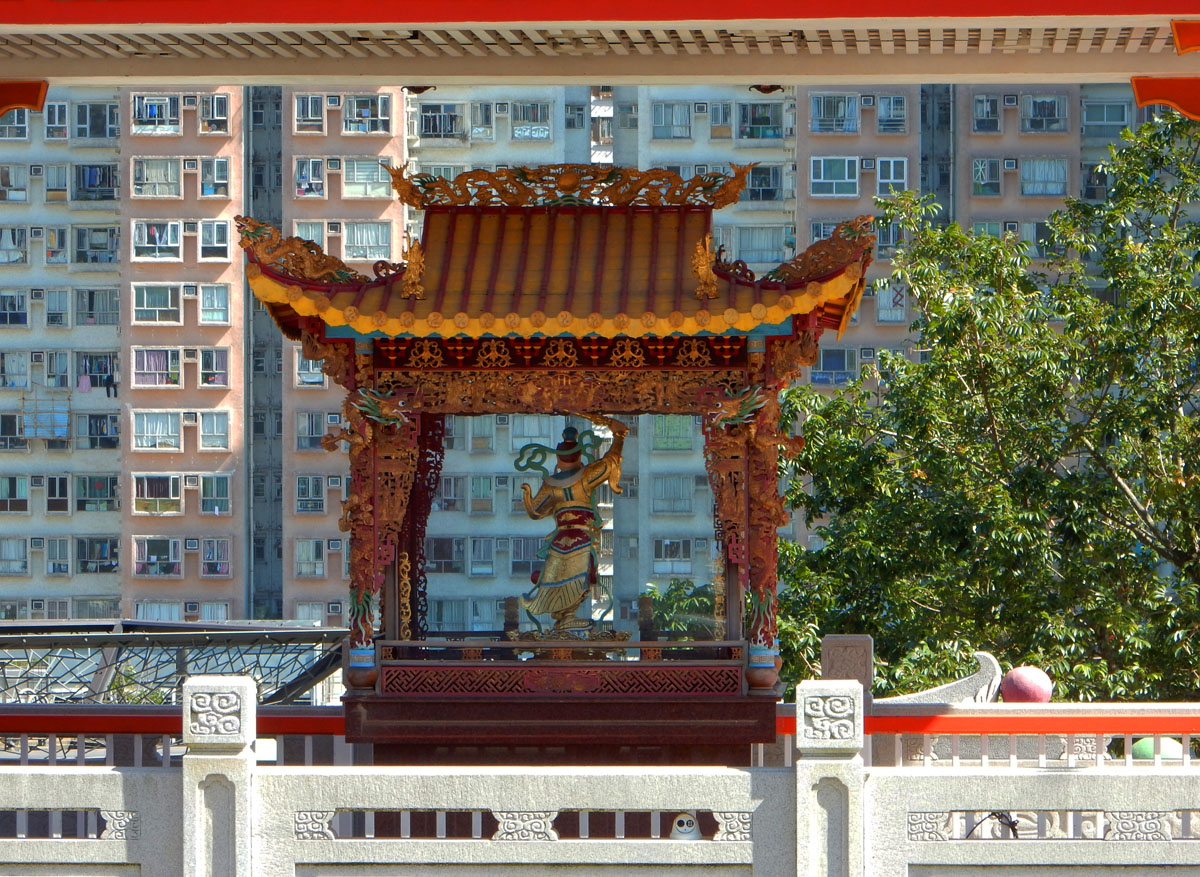 |
|||
| Fanling is now a highly urbanised town in the New Territories.
During World War 2, Fanling was just a small village, surrounded by farms. We were really short of food during the War. My father would sometimes catch the train to Fanling with a couple of rattan suitcases; he would buy vegetables, and bring them back to Hong Kong Island, where we lived in the old Italian Convent on Caine Road. My brother and I would put the veggies into an old rickety pram which we would push up the Old Peak Road. We would then sell the produce to the few neutral country consulates which still existed on the Peak. My brother was then 9 years old, and I was 7. |
|||
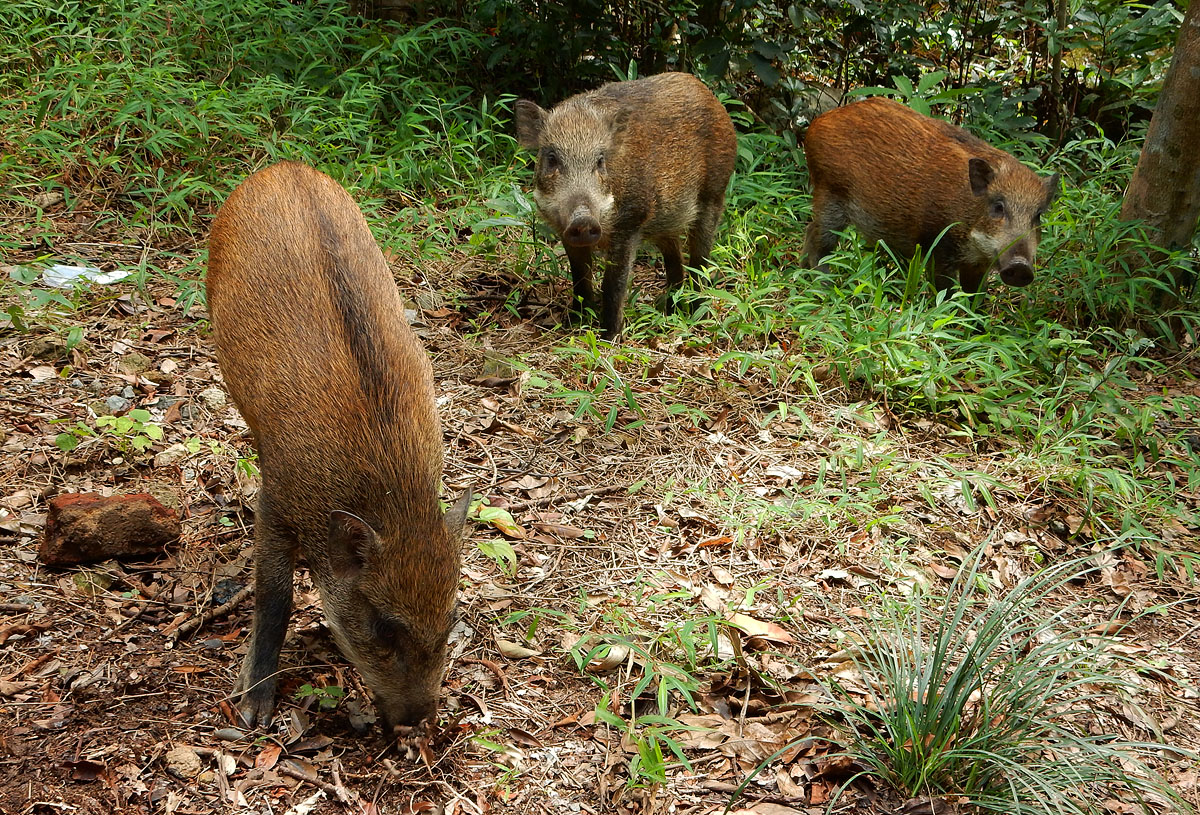 |
|||
| I had previously connected on Facebook with Bill Lake, who now lives in Hong Kong. He drove me around Kowloon and the New Territories and he was an excellent tour guide! On the road to Sai Kung, we came across these wild boar. | |||
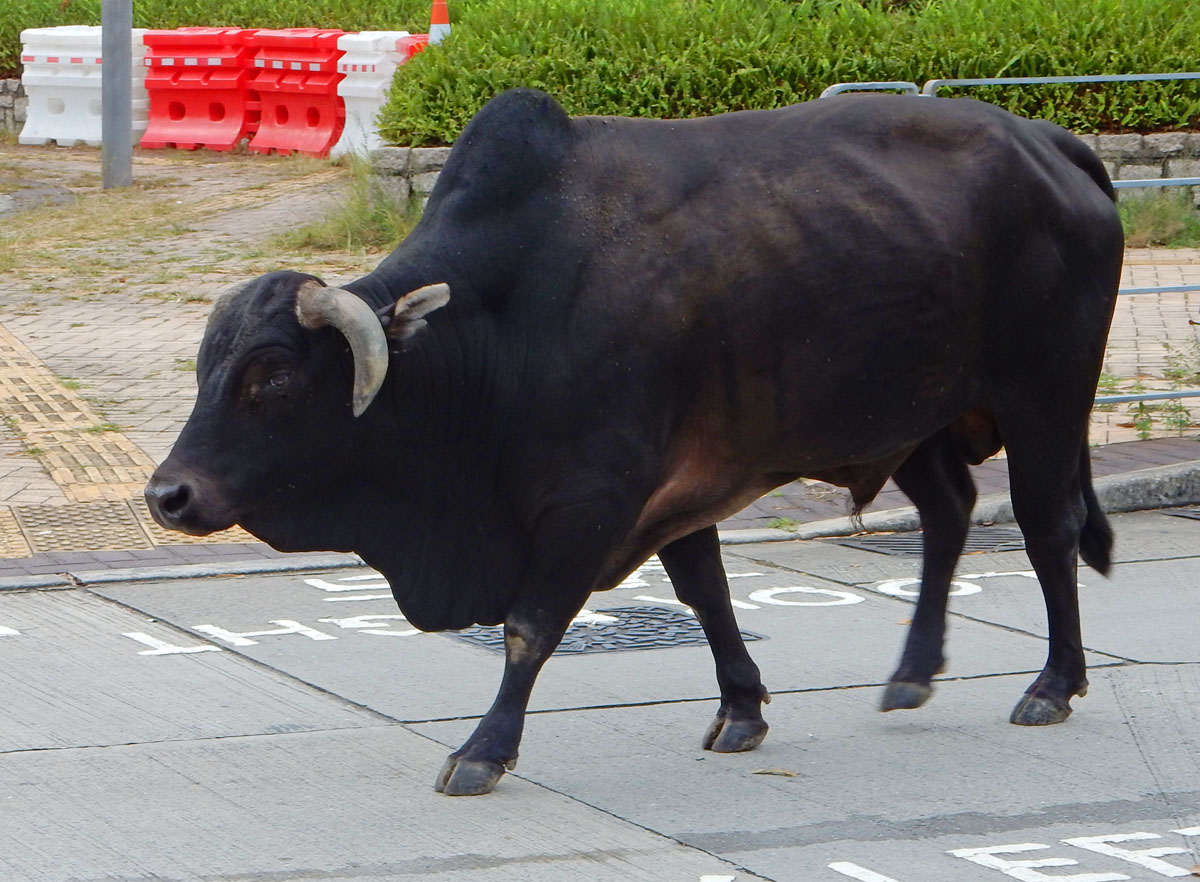 |
|||
| Now that agriculture is virtually finished in the New Territories, quite a few of the old buffaloes have become feral. Bill told me that this one, calmly walking the streets of Sai Kung, is affectionately called "Grumpy". | |||
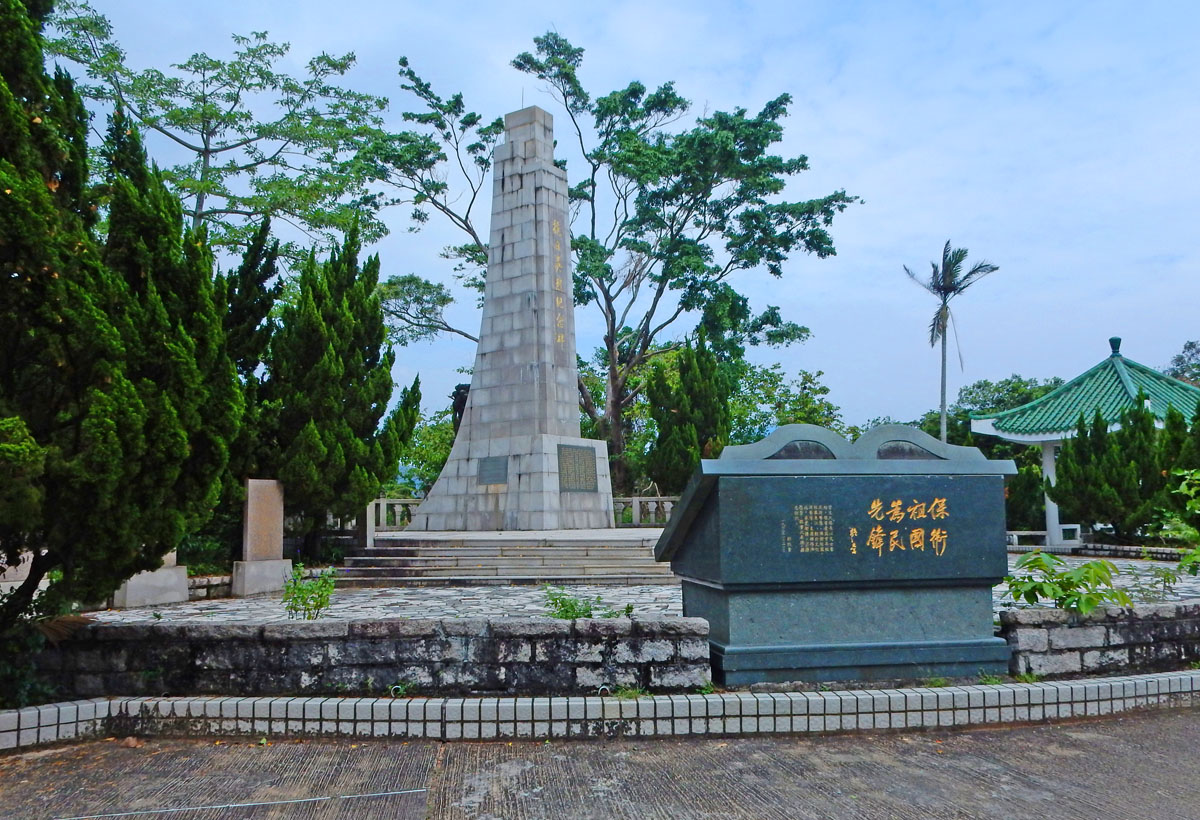 |
|||
| Bill Lake joined the British Army quite a few years ago and was then posted to Hong Kong. He took early retirement from the army and decided to stay in Hong Kong.
Since then he has become a keen student of Hong Kong's military history. He took me to this memorial near Sai Kung, dedicated to a brave group of Chinese guerillas, called the East River Column. They fought fiercely against the Japanese Occupation Forces throughout the Second World War. By 1943, the brigade had nearly 5000 full-time soldiers. Many a pitched battle was fought in the New Territories then, both at land and at sea. In this area alone, there are 70 graves of Chinese guerillas who died fighting the Japanese. Many more graves are spread throughout the New Territories. As Michael Caine would say: "Not many people know that!" |
|||
|
To return to the Paintings section of this website, please CLICK HERE
|
|||